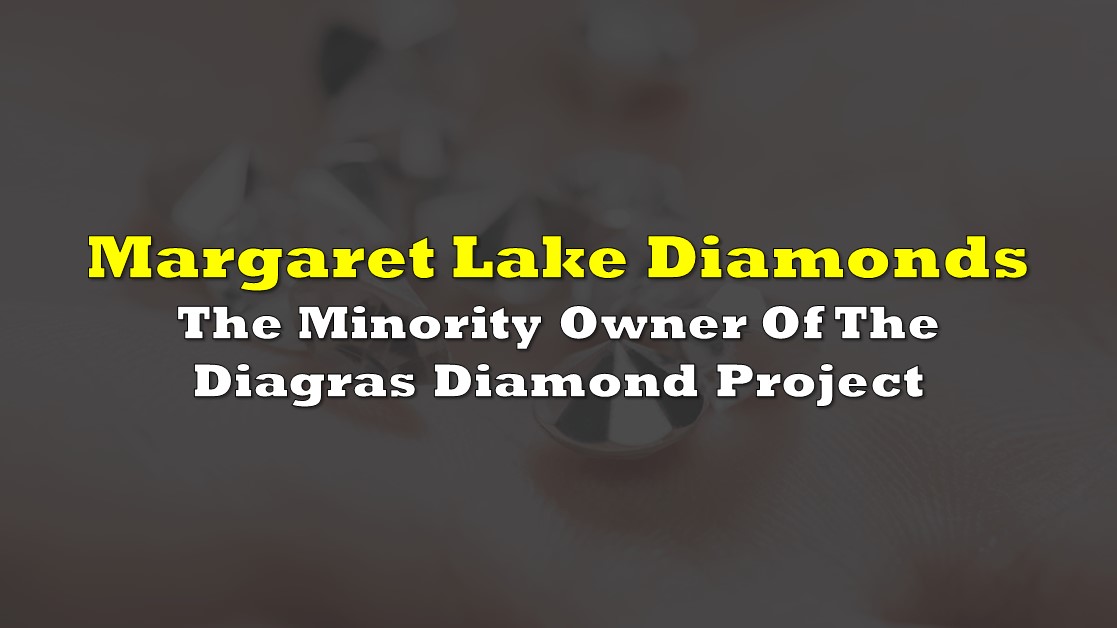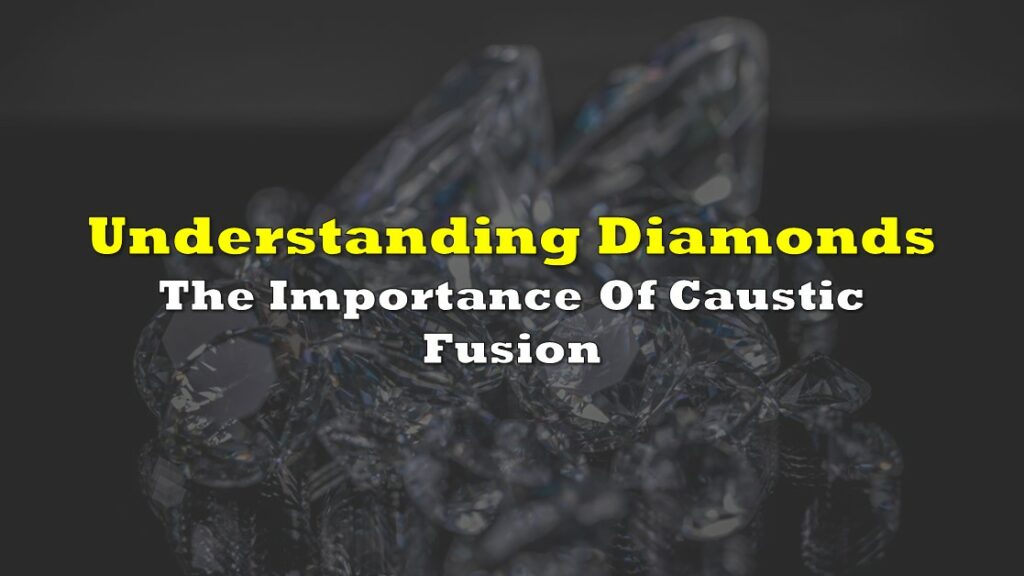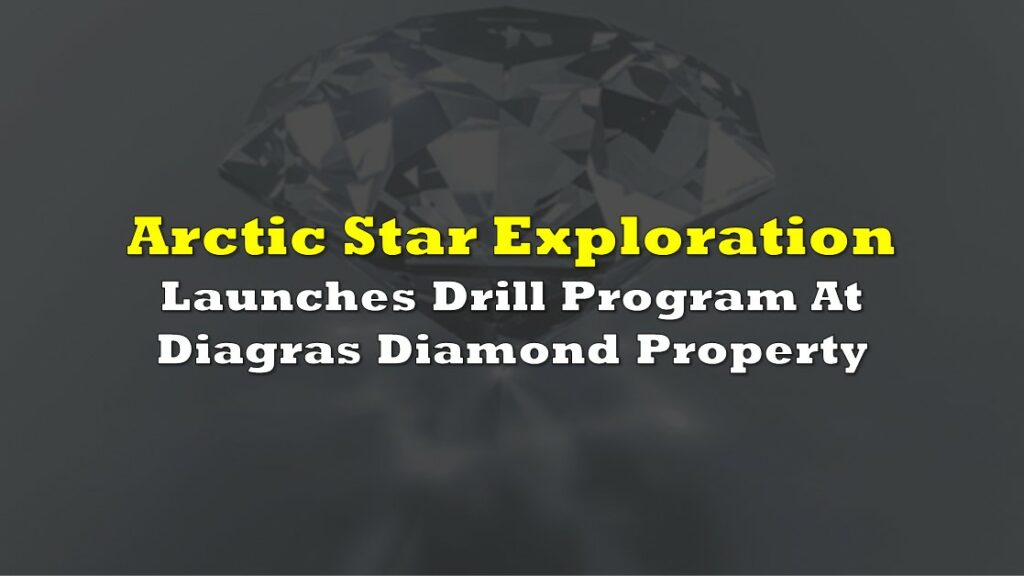Margaret Lake Diamonds Inc. (TSXV: DIA) is a Vancouver-based junior mineral exploration company that holds an 18.5% interest in the 48,346 hectare Diagras Diamond Project, a joint venture with Arctic Star Exploration Corp. (TSXV: ADD). The Diagras property is located in the northeastern part of the prolific Lac de Gras kimberlite field, approximately 300 kilometres northeast of the city of Yellowknife in the Northwest Territories. It consists of 58 contiguous claims that were originally staked by Arctic Star, which is the majority owner, with 81.5% of the project.
The property is situated 22 km northeast of the Diavik diamond mine, operated by mining giant Rio Tinto. It is also 36 km east of the Ekati Mine, Canada’s first surface and underground diamond mine, which entered into production in 1998, and is currently owned and operated by Arctic Canadian Mining Company Ltd.
These two prolific mines were a result of the discovery of diamonds in the Northwest Territories in the late 1980’s. Since this beginning, the Canadian diamond mining industry has grown significantly, becoming the world’s 3rd largest rough diamond producer. In 2019, Canadian diamond production accounted for 13.5% by volume and 12.5% by value of worldwide production, with Canadian diamond exports valued at $2.19 billion.
The Sequoia Kimberlite Complex
In the Spring of 2021, Arctic Star discovered the Sequoia Kimberlite Complex. They recovered two commercial-grade diamonds, indicating the potential for large diamonds greater than 52 cts (carats). Sequoia could potentially be the largest diamond-bearing formation in the Lac de Gras district, eclipsing the original find in the 1990’s that now hosts the Ekati and Diavik mines.
What makes the Sequoia discovery special is that the caustic fusion results from the samples showed half of the recovered diamonds are Type-2 diamonds, which are nitrogen-free, almost pure carbon, and highly sought after in the diamond market. Only around 2% of diamonds found around the world are Type-2, and typically, the diamonds found around Lac de Gras have been mostly non-transparent grey stones, known as Boart. Caustic fusion from the Sequoia samples shows a highly unusual 100% white and clear population of diamonds.
The Arbutus Kimberlite
On June 1, 2022, Arctic Star announced that during testing of one of the 25 known Class B type kimberlites on the property, it discovered a new kimberlite that the company has named ‘Arbutus.’ Arctic Star’s exploration efforts up to 2021 have been focused on the Class B kimberlites, and that led to the discovery of Sequoia and 5 other kimberlites.
The Arbutus kimberlite was discovered by drilling a magnetic target southeast of the Finlay Kimberlite that DeBeers discovered in the 1990s. The target was identified by an airborne EM survey, and through drill intercepts and subsequent geophysics. The Arbutus pipe appears to be about 200 metres in length and 25 metres wide.
The drill core from the Project’s recently completed Spring 2022 drill program was sent to the SRC (Saskatchewan Research Council) diamond laboratory for caustic fusion analysis (assaying). Results from the drill core analysis are expected in the near future. This will give Arctic Star a clearer picture of the Sequoia and Arbutus’ potential.
Further Exploration
Due to a lake on the property, drilling at Sequoia cannot resume until the ice forms again later this year. Then, Arctic Star plans to conduct a large 3000 ton bulk sample of over 1500 carats by drilling cores of up to one-metre in diameter. This will help to more accurately determine the diamond population and the average price per carat. In the interim, data will be compiled to delineate the exact dimensions of the kimberlites, and assess tonnage to determine grades and grade variation.
It is interesting to note that in 2018, the Diagras property was 100% owned by Margaret Lake. In May 2018, Arctic Star was brought in as a Joint-Venture partner, with Margaret Lake retaining a 60% interest in the project. In November 2021, Arctic Star’s ownership in the Diagras Project increased to 81.5%. The Diagras Project has reunited Margaret Lake’s geologist David Kelsch with Arctic Star’s Chief Geologist, Buddy Doyle, both of whom were on the Diavik exploration team that discovered the A418 kimberlite at Diavik 30 years ago.
The Recent Funding
On June 17, 2022, Margaret Lake announced that it had closed the first tranche of a private placement unit offering, raising aggregate gross proceeds of $777,368. The private placement was done at $0.14, with each unit consisting of one common share and one share purchase warrant exercisable to acquire an additional share at a price of $0.28 per share for a period of 24 months.
The first tranche also had a flow-through (FT) unit component to the placement at a price of 15 cents per unit, for gross proceeds of $102,450. Each FT unit consisted of one FT common share and one non flow through (NFT) warrant exercisable to acquire an additional share at a price of $0.30 per for a period of 24 months from the date of issuance.
The warrants are also notably subject to an acceleration clause. Should the shares trade at or above $0.32 per share for 10 consecutive trading days, the expiry date of the warrants will be automatically accelerated to a date 30 days after the date the company provides an acceleration notice by press release to warrants holders.
The second tranche of the financing was closed on July 18. $777,039.90 was raised in the via the sale of common shares, and a further $397,549.05 was raised via the flow through units.
The proceeds from the financing is earmarked to be used for Margaret Lake’s contribution to their joint venture with Arctic Star, as well as for working capital purposes.
The Need.. And the Opportunity
The Diagras Diamond Project is one of only a handful of active diamond exploration projects globally. It is believed to be closely watched by the industry’s key players, such as DeBeers and Rio Tinto, which operates the nearby Diavik mine. Both the Diavik and Ekati mines are nearing the end of their mine life. If the Sequoia proves to be a larger kimberlite field than the original Lac de Gras field, Diagras could become a prime acquisition target for any of the majors.
Production from Sequoia could provide feedstock for the Ekati mill, which might otherwise have to cease operations if the mine closes. Keeping the mill operating would negate expensive decommissioning and site remediation costs. It would also continue to provide economic continuity for the Northwest Territories economy, one that has been largely fueled by the diamond industry.
In Closing
Margaret Lake Diamonds has 25.71 million shares outstanding and a quite modest $5.143 million market capitalization. And as seen above, Margaret Lake is well capitalized as a result of its recent financing, and provides junior exploration investors with an alternate exposure to the Diagras Project’s potential upside.
The caustic fusion results from the recently completed 2021 drill program at Sequoia will paint a clearer picture of Sequoia’s long-term potential. It should also provide optimal targets for the project’s winter 3000-ton bulk sampling of over 1500 carats. This is necessary to establish a preliminary economic assessment of the project and to update its NI 43-101 Report.
FULL DISCLOSURE: Margaret Lake Diamonds is a client of Canacom Group, the parent company of The Deep Dive. The author has been compensated to cover Margaret Lake Diamonds on The Deep Dive, with The Deep Dive having full editorial control. Not a recommendation to buy or sell. Always do additional research and consult a professional before purchasing a security.









